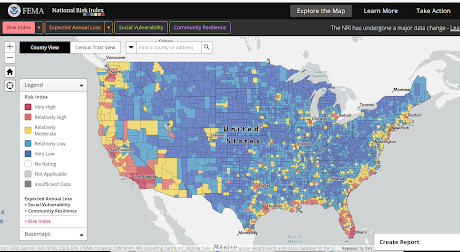#17,509
Late on Friday afternoon I noticed my local water utility was offline, and after about an hour I was informed by my park manager that there had been a `failure' at the community pump house, and that it would be at least Monday before repairs could be made.
I also keep a case or two of drinking water around - so while an inconvenience - it hasn't been much of a hassle. Not nearly as bad as being without power for days, as often happens following hurricanes.Regular readers know that as a `prepper' I routinely keep about 40 gallons of fresh water (in plastic jugs), which I replace and chlorinate every year for hurricane season. Enough for bathing, doing dishes, and toilet flushing for a couple of weeks.
But it has inspired me to order a 1 gallon garden pump sprayer (arrives today) which should make doing dishes easier (and use less water), and might even work as a make-shift shower. Admittedly, It will probably require a refill or two to get a proper sluice off.
After several prolonged power outages (and more frequent short ones) the past few years - in addition to having flashlights and lanterns - I've installed stick-on battery operated puck lights (LED) around my home, particularly over sinks and in closets, as washing hands, brushing teeth, and rummaging for clothes is far easier with two hands available.
As the FEMA map at the top of this blog indicates, I live in a `disaster prone' region of the United States. When it comes to natural disasters California and Florida lead the list. But increasingly, we're seeing fires, floods, tornadoes, earthquakes and other major disruptions hit across the nation.
And the opening months of COVID showed what can happen to the supply chain.
Although that is up 2% from the 2019 survey, it is far from ideal.
For me that means prolonged power (and water) outages, accidents or injury (at home or in the car), disruptions in the food chain, and - worst of all - the need to evacuate to a safer location.
My biggest investment has been in solar and battery backups, which I've described in past blogs (see Hurricane Prep: Some Simple Off-The-Shelf Solar Solutions For Power Outages excerpts below).

My Old Solar Power System
While I still use the above system (with 12 volt Solar panels) to power my CPAP, and recharge AA & AAA batteries, I've shifted a lot of the burden to USB powered devices.

The `core' ingredients are 2 or more USB battery banks (1 to use while the other charges), preferably 20,000 milliamps each ($25-$40 each), and at least one solar panel. I went with a single 21 watt 5 volt panel ($50) since two of my battery banks have (very) small integral solar panels.
This initial investment will run you between $110 and $140, depending on brand. I'm not recommending any specific brands, so do your homework.
The accessories: . . . in my case, they include mini-fans, rechargeable lanterns, cell phones, my iPAD, and a USB powered battery charger. This allows me to recharge my supply of Ni-CD or Ni-MH batteries that power my walkie-talkies, battery operated lanterns, radios, and other devices.
While this won't run an air conditioner, freezer, refrigerator, or anything 120 volt, it will keep LED lanterns and fans running, sustain simple communications (radio, cell phone, and walkie-talkies), and even allow for some `luxuries', such as my MP3 player, tablet, and even an bluetooth speaker.
An unlike my old solar charging system, all of this (including accessories) fits nicely in a 26 inch gym bag. Ready to throw in the back of my car if I am forced to evacuate again.
Although I've prepared primarily because I live in hurricane country, many governments view a prolonged grid-down scenario as the 2nd most likely high severity disaster - after a pandemic - that they worry about.Five years ago, in NIAC: Surviving A Catastrophic Power Outage, we looked at a NIAC (National Infrastructure Advisory Council) 94-page report that examines the United State's ability to respond to and recover from a widespread catastrophic power outage.
As always, in any emergency, the advantage goes to the prepared. And in these trying times, we can use all the advantages we can get.
For more on general preparedness, a good place to start is Ready.gov. For hurricane specific preparedness resources from NOAA, you'll want to follow these links.
HURRICANE SAFETY
ADDITIONAL RESOURCES



